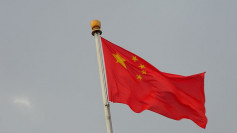China expands its space exploration beyond the moon. China recently sent its Chang'e 4 spacecraft in the far side of the moon in January last year and it is now planning an exploration on an asteroid and a comet by 2022. The Xinhua news agency revealed the plan which is still under discussion. according to the report, they plan to send a probe to visit and collect samples from the asteroid 2016 HO3, a small near-Earth asteroid which is also known as Kamo'oalewa.
According to Xinhua's report, the probe will fly back to the proximity of Earth, and a return capsule will be released to bring the samples back to Earth. It added that after that, the probe will continue its journey. The news agency also said that with the assistance of the gravity of Earth and Mars, it will finally arrive at the main asteroid belt and orbit the Comet 133P to explore it.
The Comet 133P/ the Elst-Pizarro, also known as a "main-belt comet", is an asteroid-belt body that has shown comet-like activities in the past. It was given an asteroid designation as 7968 Elst-Pizarro.
The 133P is doubted as an "active asteroid", a cosmic class with several known members. one of the recent addition to the "active asteroid" list is the Bennu, a near-Earth space rock, which was NASA's Osiris-Rex probe has been exploring up close since late last year. The probe has observed that numerous dust particles are ejecting from the 1,650-foot-wide rock. They are not yet certain on the cause of the phenomenon.
According to the report of Xinhua, the planned mission of China will likely last for about 10 years. The exploration aims to aid scientists better understand the two objects composition, structure, orbit, rotation, shape, and size, and its characteristics through the spacecraft's gathered data during the exploration.
According to reports, Osiris-Rex plans to bring pieces of the Bennu to Earth in 2023 if everything moves according to NASA's plan. Japan had already sent its Hayabusa2 mission to an asteroid and it has already snagged bits of the 3,000-foot-wide asteroid Rygu. They are planning to bring back the pieces they collected back to Earth in late 2020. In 2010 the first Hayabusa mission of Japan brought pieces of the stony asteroid Itokawa back to Japan.
China also plans to bring rock souvenirs from the moon as part of its ambitious and ongoing Chang'e lunar program. China's Chang'e 5 will explore mars this December if all things are set.






